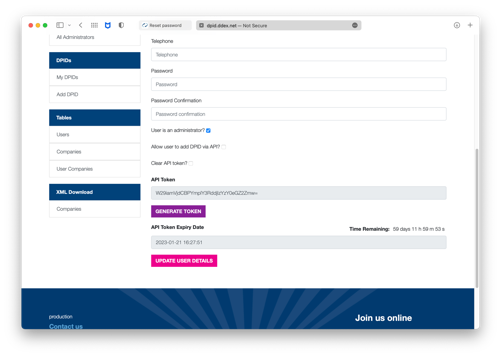DPID registry
Each entity that takes out an DDEX Implementation Licence will be allocated a DDEX Party Identifier (DPID) in accordance with the DPID standard. The allocation of DPIDs is undertaken through an automated system at dpid.ddex.net.
To be allocated a DPID applicants should complete and submit an application form at dpid.ddex.net. The application form requires the applicant to accept the terms of the DDEX Implementation Licence. The system will then automatically allocate a DPID and send this data to the applicant.
As part of the registration the applicant will receive, in the same email that includes the DPID data, credentials to enable the applicant to access the DPID registry. This access will enable the applicant to:


